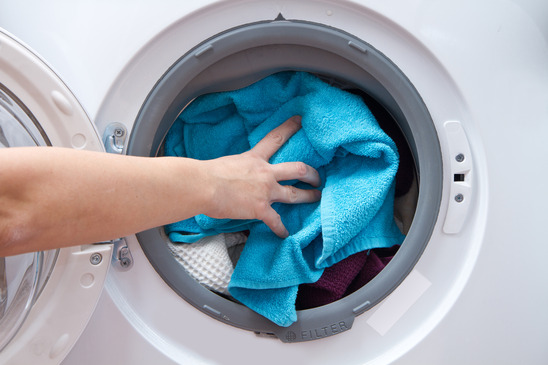Mold and Mildew Problems in Front Loading Washers
Most Cincinnati homeowners are thrilled with their front loading washing machines. They use less energy than top loading machines, and save money through their high efficiency. While there are many benefits to a front loading washing machine, their tightly sealed doors and water efficiency can make them prime breeding grounds for odor causing bacteria, mold and mildew.
Preventing Mold and Mildew in Your Front-Load Washing Machines
- Air it out – Unlike their top-loading counter parts, front-load washing machines have airtight and watertight doors that seal with a rubber gasket. That rubber seal can prevent your washer from completely drying and create an ideal environment for mold and mildew to grow.
- Use less detergent or better yet, use detergent specifically formulated for front-loading machines. Front-load washers are designed to use about 1/3 of the amount of water as top-loading machines. When you do not adjust the amount of detergent you are using to accommodate for the lower water levels, you will likely have too little water to completely get rid of all of the soap suds. The leftover soapy residue can facilitate the growth of mold and mildew. Experiment with using less detergent of a front-loading specific detergent which produces less suds.
- Avoid liquid fabric softener – Similar to using too much detergent if your front-loader, using liquid fabric softener can contribute to the growth of odor causing bacteria, mold and mildew.
Getting Rid of Mold and Mildew Odors
- Clean the rubber gasket seal of your front loading washing machine. Begin by finding a good pair of cleaning gloves and then thoroughly wipe down the gasket, door and tub of your machine with either hot soapy water, or a commercial mildew cleaner.
- Remove the detergent dispensers and give them a gentle scrubbing with your mildew cleaner and cloth.
- Run a cleaning cycles. Your appliance may have a maintenance cycle. Otherwise run the longest cycle with the hottest water possible. To give your cleaning cycle a boost consider adding one cup or bleach or 1 cup of baking soda or a commercial residue busting washer cleaner.
- Repeat the cleaning cycle if necessary.
If the problem persist you may need to contact a professional appliance repairman. You may have mildew growing behind the drum or a clogged drain or filter. A professional appliance repair technician will be able to dismantle the washer for cleaning or diagnose any other issues that may be contributing to the problem.


